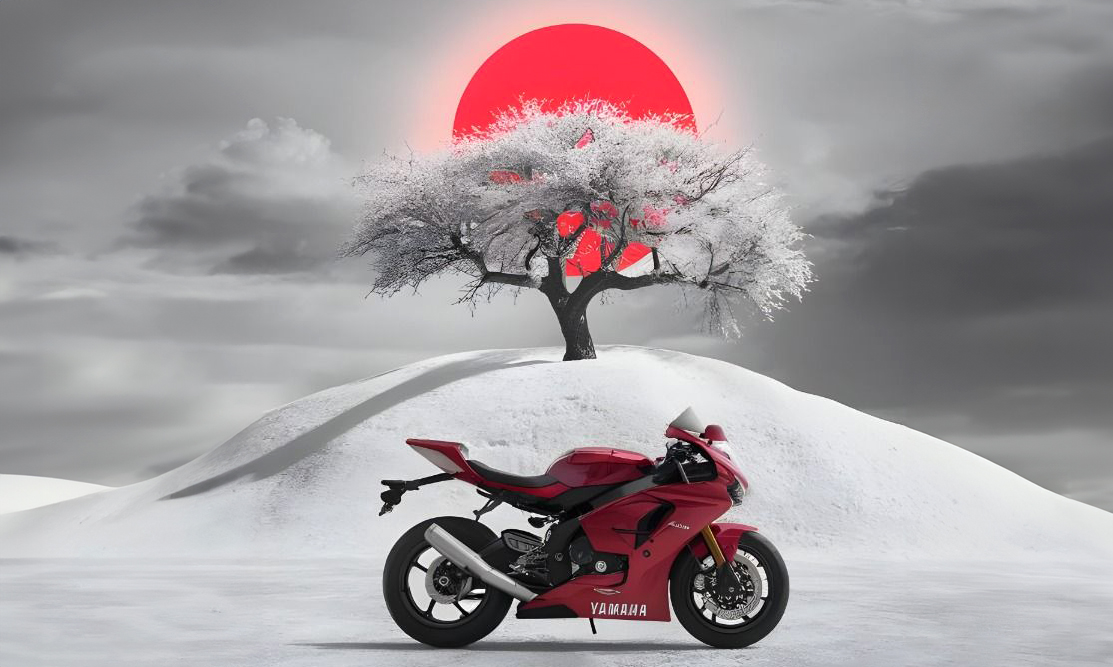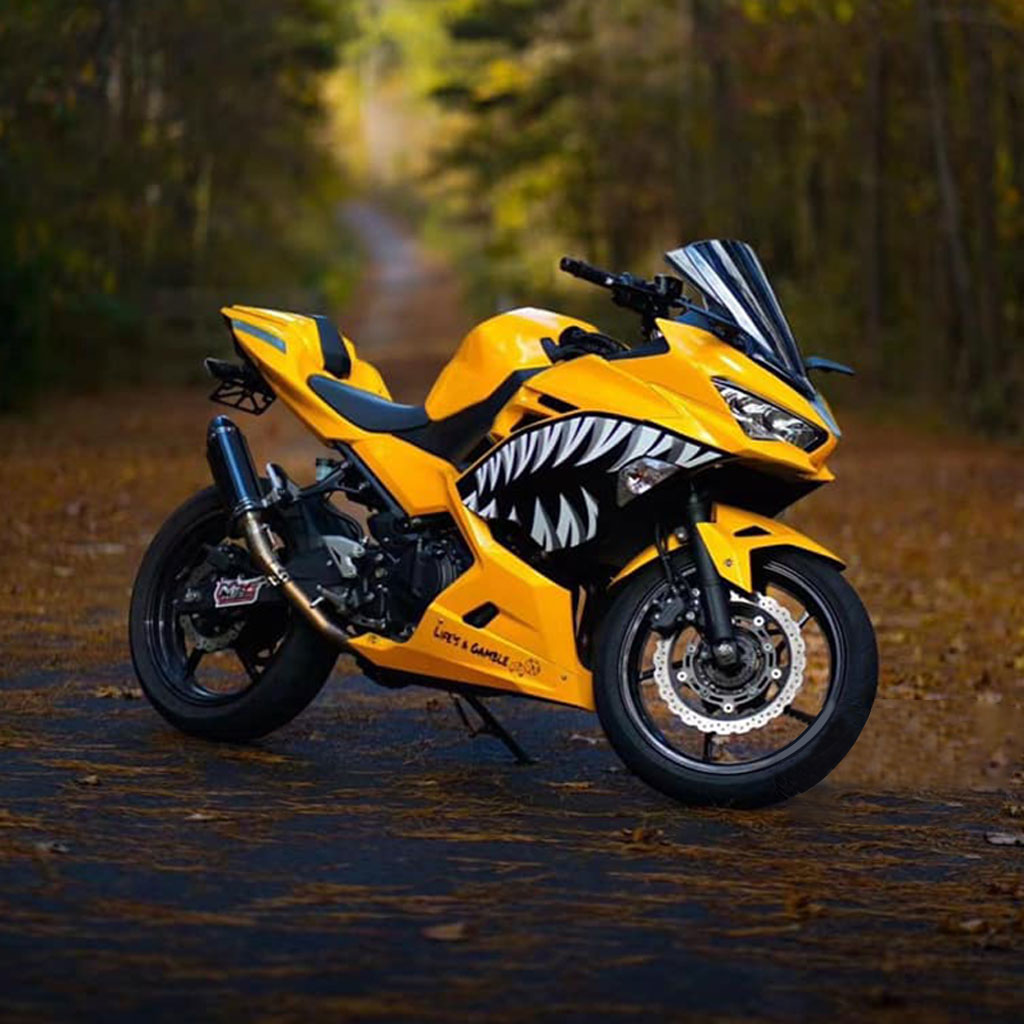How to Winterize Your Motorcycle for the Cold Months

Winter can be tough on your bike if you don’t take the time to winterize your motorcycle properly. Cold weather, moisture, and long periods of inactivity can wreak havoc on your motorcycle. Without winterizing your motorcycle, you risk fuel tank rust, a clogged fuel system, or even a dead battery. Tires can deform, and pests might make your bike their new home. Taking the time to winterize your motorcycle prevents these issues and keeps it in top shape. Plus, it ensures your ride is ready to hit the road as soon as spring arrives.
Key Takeaways
Clean your motorcycle well before storing it for winter. This stops rust and keeps it looking nice.
Change the oil and add antifreeze to stop freezing. This helps your engine work well in spring.
Add a fuel stabilizer to keep gas fresh. Fill the tank to avoid rust and water buildup.
Store your bike in a dry, cool place. Use a cover that lets air through to block dust and moisture.
Check your motorcycle every few weeks in winter. Regular checks find problems early and keep it in good condition.
Steps to Winterize Your Motorcycle
Cleaning and Inspection
Before you store your bike for the winter, start with a thorough cleaning. Dirt, grime, and salt can cause corrosion if left on the surface. Wash and dry the motorcycle completely to prevent moisture from lingering. Afterward, apply a coat of wax or polish to protect the paint and metal parts from rust. This step not only keeps your bike looking great but also shields it from winter’s harsh conditions.
Next, inspect your motorcycle for any signs of wear or damage. Here’s a quick checklist to guide you:
Tires: Check for cracks, bulges, or uneven wear. Inflate them to the recommended pressure.
Wheels and Rims: Look for damage and ensure they’re properly aligned.
Chain or Belt: Inspect for wear, chips, or fraying. Adjust the tension if needed.
Brake Pads and Rotors: Check the thickness and look for signs of wear.
Fuel System: Examine fuel lines for cracks or leaks.
Lights and Signals: Test all lights to ensure they’re working.
Finally, tighten any loose bolts and lubricate moving parts like the chain, cables, and controls. A silicone lubricant or WD-40 works well for this.
Tip: Use a center stand or motorcycle stand to keep the wheels off the ground. This prevents flat spots on the tires during winter storage.
Fluid Maintenance
Fluids play a critical role in keeping your motorcycle in top shape during winter. Start by changing the oil and filter. Old oil can turn into sludge over time, which may damage your engine. Fresh oil ensures your bike is ready to go when spring arrives.
Top off the coolant and brake fluid to maintain optimal performance. Don’t forget to add antifreeze to the cooling system. Antifreeze prevents the water in your engine from freezing, which could cause severe damage. It also raises the boiling point, preventing overheating, and protects against rust and scale buildup.
Note: Neglecting to change your oil or add antifreeze is one of the most common mistakes riders make when winterizing their bikes.
Fuel System Preparation
Gasoline can degrade in as little as 30 days, leading to engine problems. To avoid this, add a fuel stabilizer to your tank. Stabilizers prevent fuel from breaking down and forming gum or varnish. After adding the stabilizer, run the engine for a few minutes to circulate it through the system.
Fill the fuel tank to the brim to reduce condensation, which can lead to rust. If you prefer, you can drain the tank entirely, but most riders find that keeping it full with a stabilizer is a more convenient motorcycle storage solution.
Pro Tip: Using a fuel stabilizer not only keeps your fuel fresh but also absorbs moisture and impurities, ensuring your bike starts smoothly after winter storage.
Battery and Tire Care
Battery Maintenance
When you winterize your motorcycle, don’t forget to take care of the battery. Cold weather can drain its charge, leaving you with a dead battery when spring rolls around. Start by removing the motorcycle battery and storing it in a cool, dry place. This prevents exposure to freezing temperatures and moisture, which can damage it.
To maintain the battery’s health during storage, use a battery tender. This handy device keeps the charge at an optimal level without overcharging. It’s a simple way to ensure your bike is ready to start when the riding season begins again.
Tip: Label the battery terminals before disconnecting them to make reinstallation easier later.
Tire Protection
Your tires need attention too. First, check tires for cracks, bulges, or uneven wear. Inflate them to the recommended pressure to prevent flat spots and uneven wear during storage. Low pressure can cause prolonged stress on one section of the tire, leading to damage.
If possible, elevate your bike using a center stand or hydraulic lift. This keeps the tires off the ground and prevents flat spots. If lifting isn’t an option, roll the bike every few weeks to redistribute the weight. You can also use front and rear stands to keep the motorcycle upright and reduce pressure on the tires.
Before storing, clean the tires thoroughly to remove dirt and debris. Apply a protectant to shield them from temperature fluctuations and moisture. Proper tire care ensures your bike stays in great shape throughout the winter.
Reminder: Proper storage conditions, like keeping the bike in a dry space, are essential to prevent tire damage.
Storage and Protection
Proper Storage Location
Finding the right spot to store your bike during winter is crucial. A dry, temperature-controlled space like a garage or basement is ideal. These conditions protect your motorcycle from moisture and temperature swings that can cause rust or mold. If indoor motorcycle storage isn’t an option, consider outdoor motorcycle storage solutions like a weatherproof shed. Just make sure the bike is elevated off the ground to prevent moisture damage.
Avoid placing your motorcycle directly on concrete. Concrete can absorb moisture, which may seep into your bike and lead to corrosion. Use a mat or a piece of plywood under the tires to create a barrier.
Tip: Wherever you store your bike, check on it periodically to ensure it remains in good condition.
Covering Your Motorcycle
A quality cover is essential for proper winter storage. Choose a breathable cover to prevent condensation from building up. Non-breathable covers can trap moisture, leading to rust on metal parts. They can also cause paint to fade or crack due to trapped heat or UV exposure.
Make sure the cover fits snugly to shield your bike from dust and debris. A loose cover might flap in the wind, potentially scratching your motorcycle.
Reminder: Even with a cover, avoid exposing your bike to direct sunlight or extreme weather conditions.
Exhaust and Rodent Prevention
Don’t forget to protect your exhaust. Plugging the exhaust pipe keeps out moisture and prevents pests from crawling inside. You can use a rubber stopper or even a plastic bag secured with a rubber band.
Rodents can be a real nuisance during winter storage. They might chew on wires or make nests in your bike. Use traps or repellents around the storage area to keep them away. Peppermint oil or mothballs are great natural deterrents.
Pro Tip: Covering the air intake along with the exhaust adds an extra layer of protection against pests.
Additional Winterization Tips
Security and Insurance
Protecting your motorcycle during winter storage is just as important as maintaining its condition. Theft can happen even when your bike is tucked away, so taking a few extra steps can give you peace of mind.
Invest in anti-theft locks like disc brake locks or chain locks. Locks with built-in alarms are even better since they can scare off potential thieves.
Store your bike in a secure location, such as a locked garage. If you’re using a storage facility, choose one with good security and use a tamper-proof lock on your unit.
Consider installing an indoor or outdoor security system. Even a simple motion-activated camera can act as a deterrent.
Use a motorcycle cover that accommodates locks. This adds an extra layer of protection while keeping your bike hidden from prying eyes.
Tip: Always double-check that your garage door is closed and locked before leaving your bike unattended.
Don’t forget to review your insurance policy. Some policies offer coverage specifically for winter storage. This ensures you’re protected against theft or damage while your motorcycle is off the road.
Periodic Checks
Even after you winterize your motorcycle, it’s a good idea to check on it periodically. This helps you catch any issues early and ensures your bike stays in top shape.
Inspect the tires for proper inflation and look for any signs of flat spots.
Check the battery if you’re not using a tender. A quick charge can prevent it from draining completely.
Look for signs of pests around the exhaust or air intake. If you notice any, reapply repellents or traps.
Examine the cover to ensure it’s still snug and hasn’t shifted. A loose cover can expose your bike to dust or moisture.
Reminder: Regular checks during winter storage can save you from unpleasant surprises when spring arrives.
By following these tips, you’ll keep your motorcycle secure and ready to ride when the warmer months return.
Winterizing your motorcycle is one of the best ways to protect it during the cold months. By following these steps, you’ll prevent damage and ensure your bike is ready to ride when spring arrives. It’s not just about storage—it’s about proper maintenance that keeps your motorcycle in top shape for years to come. Taking the time now saves you from costly repairs later. So, grab your tools, prep your bike, and enjoy the peace of mind that comes with knowing your ride is safe and sound.
FAQ
What happens if I don’t winterize my motorcycle?
Neglecting winterization can lead to rust, a dead battery, or fuel system issues. Tires may develop flat spots, and pests could damage wiring. These problems can result in costly repairs when spring arrives.
Tip: Winterizing saves you time and money in the long run!
Can I store my motorcycle outside during winter?
Yes, but it’s not ideal. Use a weatherproof, breathable cover and elevate the bike off the ground. Protect the exhaust and air intake from moisture and pests. A garage or temperature-controlled space is always better.
How often should I check on my motorcycle during storage?
Inspect it every 2-4 weeks. Check tire pressure, battery charge, and for signs of pests. Ensure the cover is secure and hasn’t shifted. Regular checks help you catch small issues before they become big problems.
Do I need to drain the fuel tank completely?
Not necessarily. Adding a fuel stabilizer and filling the tank reduces condensation and prevents fuel degradation. Draining the tank is an option, but most riders find stabilizers more convenient.
Should I cancel my insurance during winter storage?
No, keeping your insurance active is a good idea. Many policies offer storage coverage, protecting your bike from theft or damage. Review your policy to ensure you’re covered during the off-season.
Reminder: Talk to your insurance provider about seasonal discounts!

